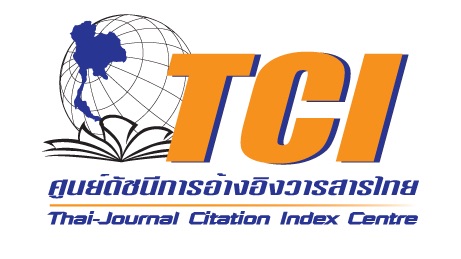Artistic Characters and Perceptual Quality of Sichuan Folk Songs
Keywords:
Sichuan Folk Songs, Artistic Characteristics, Perceptual Quality, Teaching MethodAbstract
The Purposes of the study were: 1. To study the characters of Sichuan folk songs. 2. To study the perceptual quality of Sichuan folk songs. 3. To investigate the western teaching method as related to Sichuan folk songs. The qualitative research method concentrated on doing fieldwork combined with documents studied. The place of the study was the ancient Bashu region located at the upper Yangtze River, Sichuan. Research tools were observation form and interview unstructured questions. The research findings were: 1) The characteristics of Sichuan folk songs have shown in three aspects; melody, texture, and language. For melody is based on the Yu mode which is consisted of three principal notes that appeared in four forms ACE, AEC, ECA, and EAC (A = la, C = do, E = me). The texture is dominated by monophony texture which is a single-line melodic mode. For language, words affect the rhythm of music, and sounds of language affect musical scale format and melody, the style of language affects the style of music Chinese language tones reflect the fluidity of Chinese traditional music art. 2) The perceptual quality of Sichuan folk songs is based on a person's ability to get a direct feeling of the truth, goodness, natural beauty, social life, and its environment. One can appreciate the sound, rhythm, rotation of mode, and form of music as external symbols, through which one can understand the emotions expressed in Sichuan folk songs as well as understand its historical background and cultural connotation. 3) Three western methods of teaching related to Sichuan folk song teaching are: Dalcroze's method in which the body was the place and bridge for the expression and transformation of human emotion and thought; Gordon’s idea of "Listen and think" divided into “listening is hearing", one is the hearing sensation, and the other is the hearing in listening; Kodaly’s idea of "mother language of music" in which the method of teaching should base on the own natural culture of a learner.
References
Bauguess, D. (1985). Sight singing course. Jenson Publications.
Darazs, A. (1964). Comprehensive Sight-singing and Ear-training: Based on the Method of Zoltan Kodaly (Second and Concluding Part). The Choral Journal, 5(1), 14-17.
General Introduction of the Collection of Chinese Scale Spectrograph. (2017). Culture and Art Publishing House.
Gordon, E. E. (1980). Study guide for Learning sequences in music. GIA Publications.
Gordon, E. E. (2000). Rhythm Contrasting the implications of audiation and notation. GIA Publications.
Hui, G. (2007). Establishing a broad concept of solfeggio teaching - Reflection on the national, cultural, and social problems in solfeggio teaching.
Liya, F. (2007). On the Method of Solfeggio and Ear Training of Chinese Nationalities. Shanghai Music Publishing.
Pei, L. (2017). An Important Topic in Music Education - Contemporary Theory and Practice. Central Conservatory of Music Press.
Yaxian, C. (2006). On solfeggio teaching. Shanghai music publishing.
Downloads
Published
How to Cite
Issue
Section
License

This work is licensed under a Creative Commons Attribution-NonCommercial-NoDerivatives 4.0 International License.







